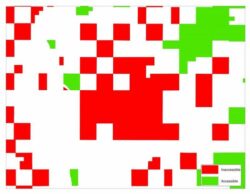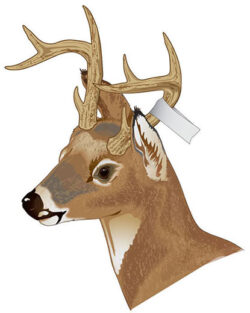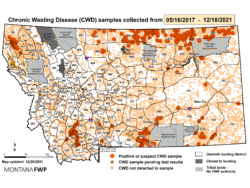A few years ago, I met a hunter that shot a big bull elk near a watershed. He was hunting between the High-Water Marks as defined by the Stream Access Law. The wounded bull managed to get onto the neighboring private land. This private land connected to a small block of public land.
A Warden ended up on the scene and contacted the private landowner and requested that he meet at the kill site, which was 5 yards on his land. The landowner would allow the removal of the elk for a trespass fee of $2,000! The hunter declined. The landowner carted off the bull with a free tag. The warden then ticketed the hunter for hunting big game in the Stream Access Law area. Sounds like a big mess. Fortunately, no bears or CWD were involved.
The hunter was ticket correctly. Here are 5 important laws that hunters must know.
What hunting can be done between the High-Water Marks as defined in the Stream Access Law? This law does not enhance hunting opportunities. It only applies to fishing and boating. No Big Game can be hunted in this zone without landowner permission. Waterfowl, upland birds can be hunted between the High-Water marks.
Can I pursue wounded game onto private land? No, you must have landowner permission.
Can I corner cross from one piece of land to another? Montana land is a checkerboard of connected corners. It is illegal to corner cross without landowner permission. 
When and where does a tag need to be attached to the Big Game animal? Immediately after harvesting the animal, you must fill out and place the tag onto the critter. DO NOT MOVE THE CRITTER until it is legally tagged. This is perhaps the most common violation that get hunters a ticket. 
If there is a horn or antler, attach the tag to them using tape. For a doe or no-horned critter, I slip the tag into the ear and use a safety pin. Others tape the tag around a leg. I also take a cellphone picture of the intact critter and license together. You must also leave proof of sex on the rear hindquarter.
For upland birds, you must leave a spurred leg on the bird as proof of sex during regular seasons. Spring turkey only permits gobblers and fall pheasant season only allows roosters to be shot.
What should I know about CWD? If you are hunting Big Game in an at risk CWD zone, become a student of this neurological disease. It has been in Montana since 2017 and was first found along the Wyoming and Canadian borders. Apparently infected deer for game farms escaped and spread the disease through fluid contact and nose to nose fluid spread. CWD is now through a lot of our state. All deer, moose, and elk are at risk. Get your critter tested at a local FWP office. Testing is free. Do not eat the meat until it is tested. You also need to dispose of the carcass properly and legally to prevent further spreading. The prions that spread the disease can remain dormant for years.
Hunting is becoming harder in Montana. Access is more limited. Private landowners have more control and influence over access laws. Public land is becoming more crowded. Know the laws and follow them.
Montana Grant